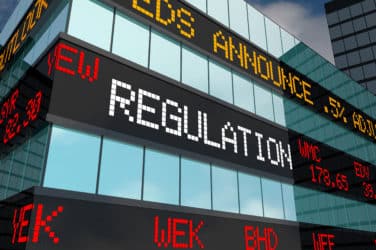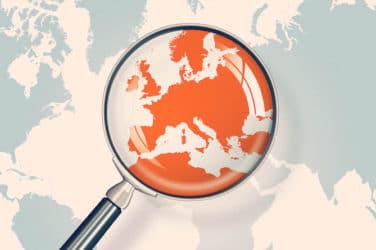
Axa Investment Managers has launched an ESG fund while Stoxx, the operator of Deutsche Börse’s index business, has licensed ESG impact indices to a US exchange-traded fund manager as interest in sustainable investing continues to grow.
Matteo Andreetto, chief executive of Stoxx Limited said in a statement that nearly $7 trillion are invested in environmental, social and governance (ESG) strategies in the US, up from $3.7 trillion in 2012, citing The Forum for Sustainable and Responsible Investment.
Today Stoxx said the new Stoxx Global ESG Impact and Stoxx USA ESG Impact indices have been licensed to Northern Trust’s FlexShares for two ETFs. The indexes exclude coal miners, violators of United Nations Global Compact principles and companies involved with controversial weapons. An aggregate ESG score is calculated for the remaining companies based on the Carbon Disclosure Project emission/energy reduction target, percentage of women on the board, percentage of independent directors, policy against child labor and golden parachute agreement.
Shundrawn A Thomas, head of funds and managed accounts at Northern Trust, said in a statement: “Sustainable investing is a dynamic area of emphasis for our clients globally.” Northern Trust manages $60bn in ESG assets.
This week Axa IM, which had €666bn in assets under management at the end of March this year, launched the Axa World Funds Global SmartBeta Equity ESG fund in Europe, after running the strategy in Australia. Axa IM said in a statement that its ESG framework is systematically incorporated into the portfolio construction process by avoiding companies with controversies and low ESG scores while increasing exposure to companies with high ESG scores.
The new fund aims to deliver 1% to 2% annualised excess return with approximately 80% of market volatility over a full cycle as well as achieving a higher ESG score and a lower carbon footprint.
Jonathan White, Axa IM SmartBeta client portfolio manager, said in a statement: “We are confident that a better ESG outcome does not detract from the core risk and return objectives of our SmartBeta strategies given the breadth of our security coverage and the generally low historical correlation between ESG concepts and traditional financial statement information.”
Matt Christensen, global head of responsible investing at Axa IM, said in a statement that global investors are increasingly focusing on how to manage their ESG risks and cited the new French regulation which requires large investors to measure and report on their investment policy to reduce ESG risks.
Christensen added: “This is a trend which is not going away and we firmly believe that we will see the gradual progression of responsible investment from a specialist area to a must have.”
At he beginning of this year France enacted domestic legislation, Article 173, on new green portfolio disclosure requirements for asset managers and asset owners that have to be put in place at fund level by the end of next year, or firms have to explain why the data is not being shown. The three new measures relate to ESG, covering how companies operate, their greenhouse gas emissions and whether the companies contribute to the low-carbon economy. Similar disclosure requirements are being considered by the European Union and Switzerland.
Kevin Bourne, managing direct of database services at FTSE Russell, the index and data provider owned by the London Stock Exchange Group, said at a briefing this month that US asset managers are already being approached by French clients to provide the data needed to comply with the legislation.
Last month FTSE Russell launched its Low Carbon Economy model, which measures the green revenues of 13,865 public companies, representing 98.5% of total global market capitalization.
FTSE Russell has developed a new green industry classification for listed companies made up of 8 sectors and 60 new subsectors based on audited reported revenues from goods, products and services that help the world to adapt to, mitigate or remediate the impact of climate change, resource depletion or environmental erosion. The model then calculates a score for each company – the low-carbon industrial indicator (LOWCII) factor – which is the ratio of green revenues to total revenues based on the audited financial disclosures can ranges from 0% to 100%.
In the FTSE Global Equity Index Series 7.2% of the index value comes from green revenues, almost as much as the 8.3% from emerging markets. Mark Makepeace, chief executive of FTSE Russell, said in a statement: “We calculate that the green opportunity is equitable in size to emerging markets and the launch of our green revenue data model, and related indexes, provides the missing piece for investors, with a framework that captures the full picture of their green revenue exposure for the first time.”
Fixed income investors are also becoming more interesting in sustainable investing. At the beginning of this month the Climate Bonds Initiative launched its fifth annual ‘Bonds and Climate Change: State of the Market in 2016’ report, commissioned by HSBC.
The report said there are $694bn of outstanding climate-aligned bonds: $576bn of unlabelled climate-aligned bonds and $118bn of labelled green bonds. However the total global bond market currently stands at approximately $90 trillion.
According to the International Energy Agency, cumulative investment of $53 trillion is required by 2035 in the energy sector alone. New Climate Economy estimates that $93 trillion of investment is required across the whole economy by 2030 to meet the agreement reached in Paris last year to limit global warming to below 2°C.
Low carbon transport was the largest single sector with two-thirds of issuance followed by clean energy. China is the largest country of issuance with $246bn outstanding followed by the US at $136bn and in third place, the United Kingdom with $62bn.
Zoe Knight, managing director, Climate Change Centre of Excellence at HSBC, said in the report: “The growth in size and depth of both the climate aligned and labelled green bonds is a positive for potential investors looking to lift their green exposure post the COP21 at Paris. It’s a sign of the scale and liquidity in the market and demonstrates the potential for future green investment.”
More on sustainable investment:






